Do you secretly fancy owning an E-Type Jaguar? If so, you’re hardly alone – the breed is one of the most popular cars on Hagerty’s insurance books. It’s probably Jaguar’s most famous car, and everyone knows how it stunned the world on its 1961 launch. With a 150mph top speed (at least, from the press road test cars on racing tyres, helped by some discreet engine tuning) yet a price verging on the affordable, it could hardly have done otherwise.
You could have your E-Type as a carefree open two-seater or a sleek fastback coupé with a side-hinged hatchback tailgate. Both offered an optimistic 265bhp gross, more like 220bhp as installed and by modern measuring methods, from the 3.8-litre XK straight-six with twin overhead camshafts and three hefty SU carburettors. They had all-round independent suspension and disc brakes, and a body whose flattened-tube cross-section spoke excitingly of aircraft and aerodynamics.

There were shades of the D-Type Le Mans-winner but the E-Type was yet smoother and more svelte, as well as more advanced in engineering. An E-Type was just impossibly cool, and made every high-end sporting rival seem outdated as well as overpriced. Two 1960s advertisements lodge in this writer’s mind: Super National petrol for ‘getaway people’, pictured in a speed-blurred E-Type, and a TV ad for Dop shampoo featuring a beautiful woman (Patti Boyd) driving her top-down E-Type into a car wash, washing her hair as the Jaguar drowns.
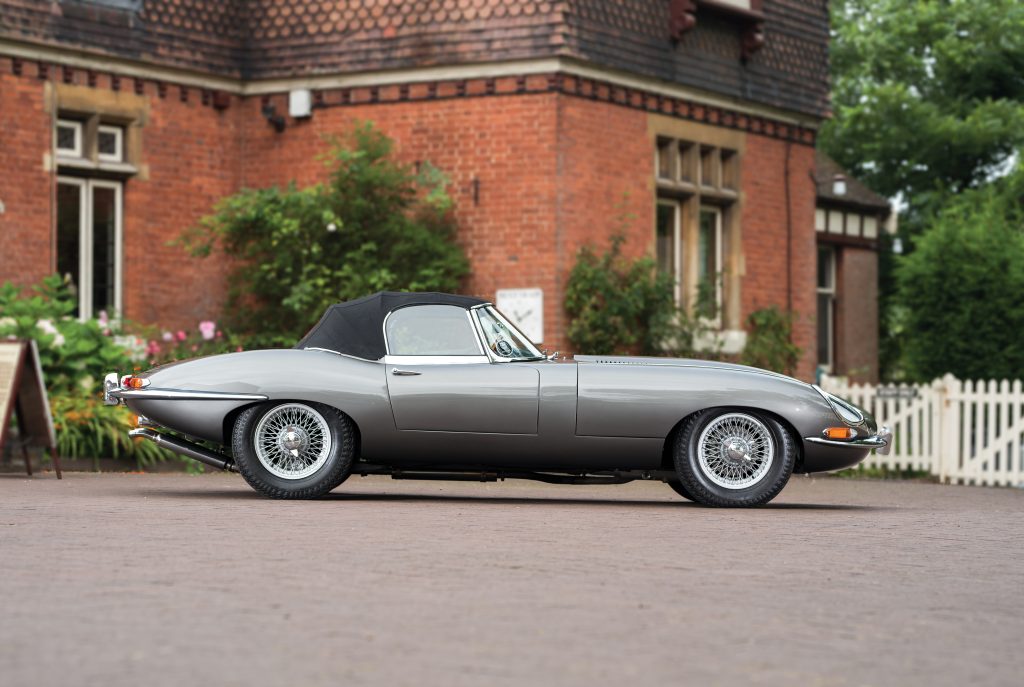
Unbelievably, the oldest E-Types are about to turn 60. Slightly younger ones, from late 1964 onwards, have an engine enlarged to 4.2 litres and an all-synchromesh gearbox, and during 1967 the clear headlamp covers were deleted. Soon afterwards, the line of dashboard toggle switches was replaced by rocker switches, one of many changes to comply with burgeoning US safety and emissions legislation; these cars are unofficially known as ‘Series one-and-a-half’. By this time the longer-wheelbase, higher-roofed 2+2 coupé had also appeared.
A year later, the Series 2 arrived with a bigger front air intake to improve cooling, plus larger side/indicator/rear light lenses. At the back, these were repositioned under the now full-width rear bumper, somewhat spoiling the look. The US market was by far the E-Type’s biggest, so inevitably that market’s demands dictated the E-Type’s evolution – which met its final form in 1973, with the Series 3.
That was the one with the 5.3-litre V12, intended to reinstate the power and pace that had ebbed away since the mid-’60s. All Series 3s were built on the 2+2’s longer wheelbase, while flared-out wheelarches and a chrome-ringed grid for the front air intake brought a radically different new look. With 272bhp, the Series 3 was almost as quick as the very first E-Types but the driving experience was very different.
It all ended in 1974, helped along by the energy crisis which annihilated demand. As for the E-Type’s presumed replacement, the XJ-S, that was a very different machine.
What’s the E-Type like to drive?
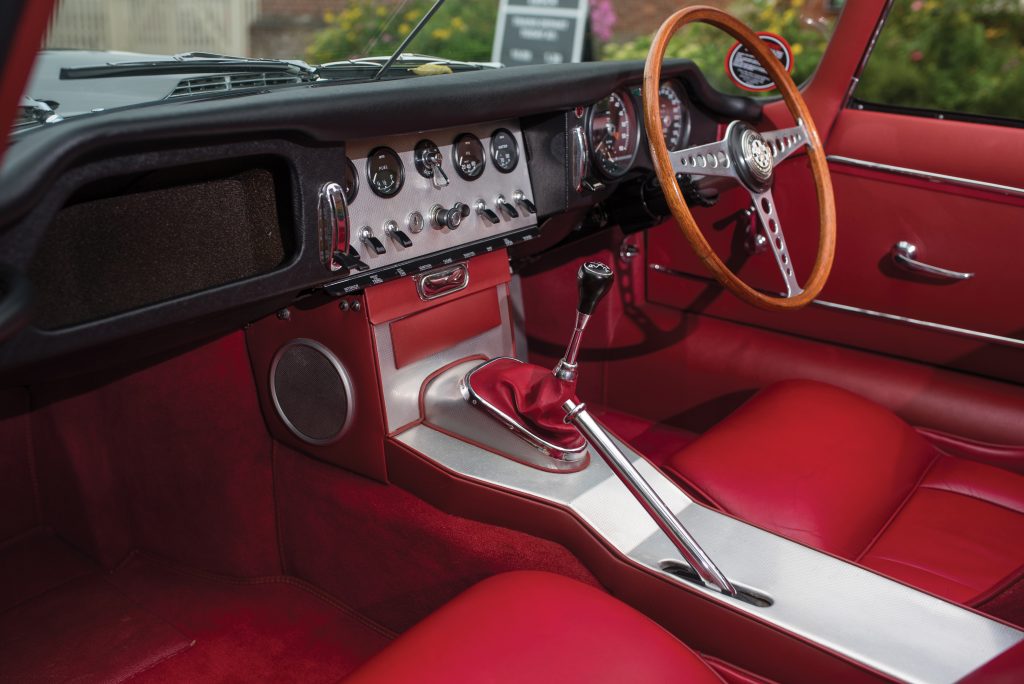
Today a good E-Type is a very valuable machine, but to drive one is to be reminded just what a brilliant car it is. A bad one, by contrast, will feel like a sloppy bag of bones, so it’s useful to know how an E-Type should drive when assessing a potential purchase.
That long, louvred bonnet instantly says ‘speed’ (and much else, depending on your mindset). Your view of it from the driving seat is framed by a semi-wraparound windscreen cleared, on all but the late cars, by not two but three wipers. Beneath the central bulge is a torquey straight-six with a deep exhaust note, bold and brassy if the exhaust system isn’t standard, unless you’re in a Series 3 in which case the soundtrack is the creamy hum of an understressed V12.
An early, 3.8-litre E-Type will have a gearbox made by Moss, with a characteristic whine to its unsynchronised first gear and a crisp, narrow-gated shift. A lot of people don’t rate the Moss ‘box, complaining of poor synchromesh and a slow action, but try a good, unworn one – they do exist – and they draw you right into the driving process. If you’re prepared to understand it, and to learn the double-declutching skills it can demand for a swift downchange, it can give huge mechanical satisfaction.




Common to all E-Types, except rare automatics and some de-toxed US cars, is enough mile-munching pace to keep you amused for hours. Also common to all is a ride of remarkable suppleness and silence for a sports car, combined with smooth, accurate steering and the confident grip that comes with all wheels always being in proper contact with the road. An E-Type is no taut racer but its fluency can be breathtaking.
The seats should hug you firmly – those of restored cars are sometimes overstuffed, and don’t draw you in as invitingly – and there’s enough space to suit most body types, except in the very early ‘flat floor’ cars in which a tall driver might have knees a-kimbo while the head pokes into the airstream.
A 2+2 is heavier and less pretty, but it’s also more useful and likely to be much cheaper. As a lower-cost route to E-Type ownership, don’t rule it out.
How much does an E-Type cost?
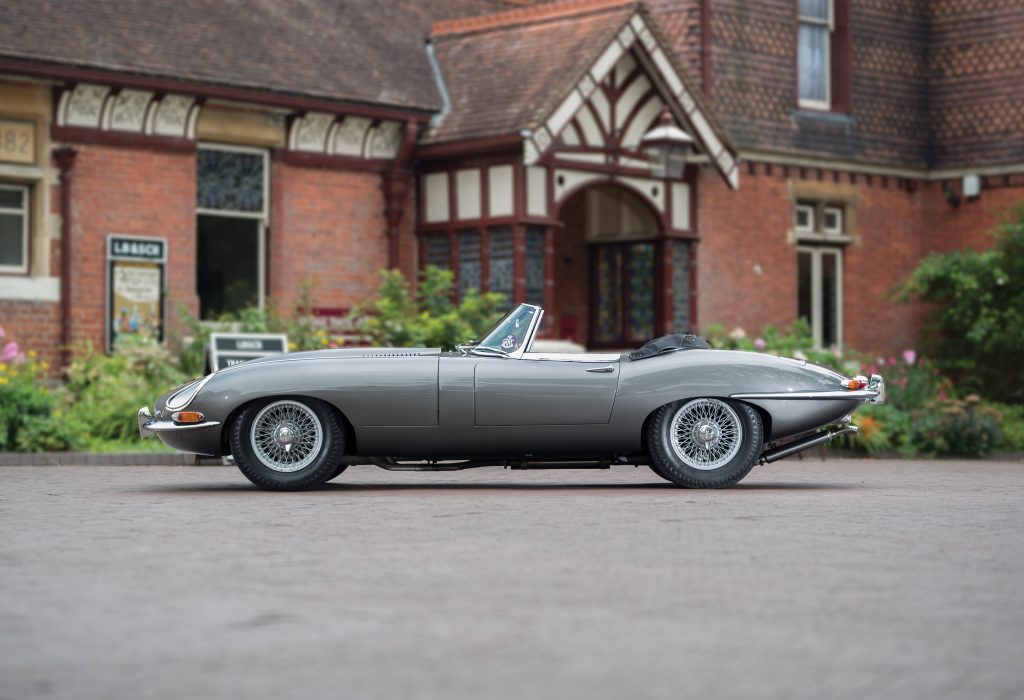
Anything from £30,000-£40,000 for a tatty 2+2 or a Series 2 restoration project up to half a million for a near-perfect 1961 car with the external bonnet locks fitted to the very first examples. The Hagerty Price Guide, which tracks auction and private sales throughout the UK, suggests a sweet spot around the £115,000 mark for nicely-restored Series 1 coupés, with the roadsters fetching £121,500 on average. Concours cars of impeccable always-UK-owned provenance will be more expensive, while Series 2 and, especially, Series 3 E-Types are less sought-after and therefore less valuable.
A big factor in E-Type values is that many cars now on offer were bought new in the US. British buyers have long tapped into this resource, the cars then converted to right-hand drive, and if the car came from a ‘dry state’ there’s also the hope that its body will have less rust. Against that, a converted US car might carry a stigma. Is it justified?
“The reality is that there are not enough right-hand-drive cars to go around everyone who wants one,” says Marcus Holland, director of long-established specialist E-Type UK. “I would say, though, that cars with a truly sound body are becoming harder and harder to find in the US.
“A converted US car would not be an issue in itself, as the E-Type can be built largely ambidextrously. The conversions can now be done to be almost unrecognisable visually from an original RHD example, but you need to watch out for a conversion done on a budget. On a Series 1, for example, the gauges might not have been repositioned or wires are extended to make the gauges work. The last thing anyone wants is an electrical fire in their E-Type.”
Don’t assume, then, that an ex-US car will be cheaper. If it’s properly converted to UK spec, including the carburation and ignition, it won’t be. After all, it has become the same-spec car and demand is strong.
What goes wrong, and what should you look for when buying an E-Type?
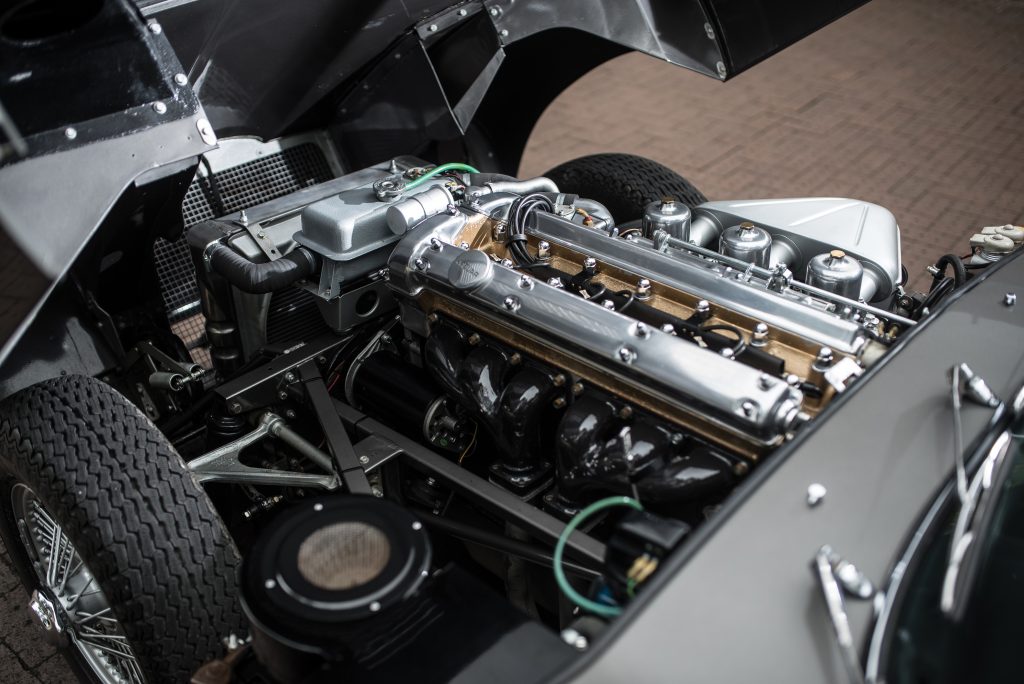
If an E-Type is well maintained and regularly used, it will be robust and reliable. It will need a service every year, or more often if you use it a lot, but a few hundred pounds should easily cover each visit to a specialist if you choose that route. That said, it’s not a difficult car to service yourself, and with that huge, forward-pivoting bonnet open, the entire front end is easy to get at.
The main worry is rust. If your E-Type has been properly restored and wax-injected, you can relax a little, but there’s plenty of scope for bodged repairs and rampant filler on cheap (or even not-so-cheap) cars offered for sale. “Bodywork on an E-Type is absolutely critical,” says E-Type UK’s Holland. “We often get called by a customer looking to buy a car, saying, ‘There is just some minor rust present, but the mechanicals are perfect. Should I buy it?’
“On an E-Type, with its monocoque construction, you almost want the equation the other way around: the bodywork perfect, the mechanicals a bit ropey. Mechanicals are easier to fix, and less costly. Spotting corrosion on an E-Type can be difficult, but cars looking a little sorry for themselves will normally start presenting rust around the rear wheel arches and the join between the sill and the floor. Tell-tale signs are excessive filler, and thick underseal which can hide a whole raft of issues and rot.”




As for the engine, the usual checks apply: excessive rattles beyond the usual tappet chatter, knocks, signs of blue exhaust smoke, low oil pressure, leaks of oil or water. On the test drive it should feel smooth and powerful, with a minimal smell from the exhaust. If it doesn’t, but it passes the checks mentioned above, then it will probably respond to a good service and tune-up.
Holland emphasises that an E-Type “should feel tight, pointed and fairly precise. If it doesn’t, then the top or bottom wishbone bushes or balljoints might be worn. These are best checked with no weight on the wheels but if you can’t do that, you can pull the wheel back and forth to feel for movement.”
He advises checking for play at the steering wheel rim, too, which could be in the column universal joints, the trackrod ends or in the rack itself. If the suspension dampers feel soft, leading to soggy handling and a wallowing ride, it’s worth remembering that the rear suspension has four of them rather than the usual pair.
Many E-Types, especially early ones, have been fitted with items such as a better radiator and electric fan, electronic ignition and stronger brakes to suit them for modern traffic conditions. The purists sometimes object, but Holland not only recommends such improvements but finds they can add to a car’s value.
So, which is the right E-Type for you?
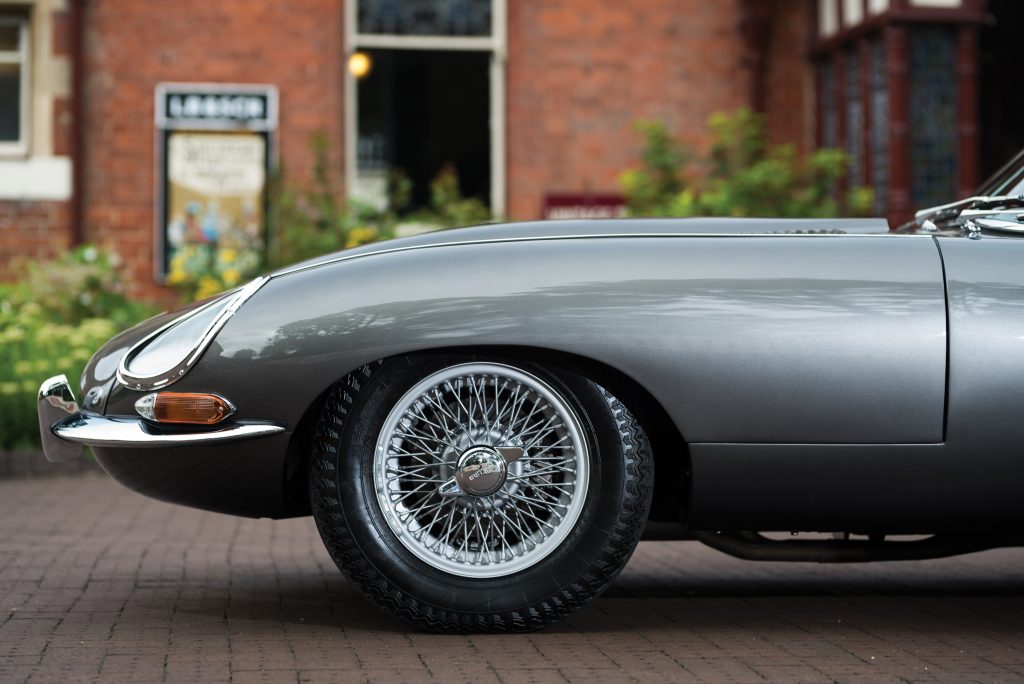
Over to Marcus Holland again: “The E-Type is a great car for people who have not experienced classic car ownership previously. It’s an easy car to maintain and very enjoyable to drive. I advise someone starting out to go for a 4.2-litre car, either Series 1 or Series 2, with the all-synchromesh gearbox and decent brakes.
“A buyer looking for something a little different could consider a Series 3. At E-Type UK we really believe it’s a great, and undervalued, car. The longer wheelbase and V12 engine give a driving experience that’s very different from the earlier cars, but just as enjoyable. Most important of all, though, is to buy a car you would love to drive and enjoy owning. Don’t buy it for any other reason.”










V12 commemorative is probably the best